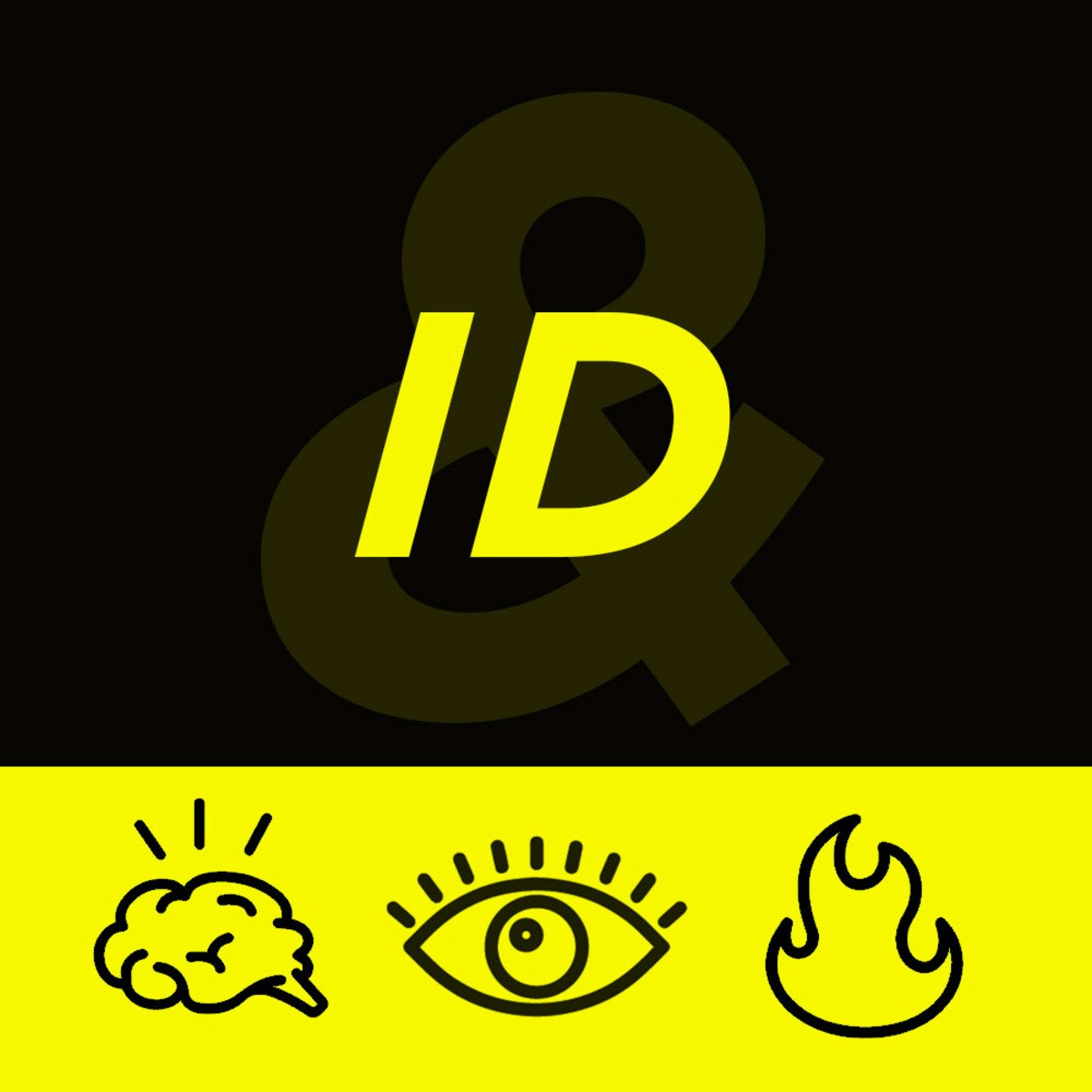Brand Strategist
Brand Strategist: Shaping Perceptions and Driving Business Growth
A Brand Strategist is an architect of perception. They define what a company, product, or service stands for in the minds of its audience. It involves deep analysis, creative thinking, and clear communication to build a unique and compelling brand identity that connects with people and differentiates the organization in the marketplace. It's a role that blends art and science, intuition and data.
Working as a Brand Strategist can be incredibly rewarding. You get to shape how the world sees and interacts with brands, influencing culture and consumer behavior. It requires a curious mind, constantly seeking to understand people, markets, and trends. If you enjoy solving complex puzzles, telling compelling stories, and seeing your ideas come to life in the real world, this career path might be an exciting fit for you.
Introduction to Brand Strategy
What is Brand Strategy?
Brand strategy is the long-term plan for the development of a successful brand to achieve specific goals. It's more than just a logo or a tagline; it's the foundational blueprint that guides how a brand looks, sounds, and behaves. A well-defined strategy ensures consistency across all touchpoints and builds meaningful connections with the target audience.
The core purpose of brand strategy is to articulate a brand's unique value proposition – why should a customer choose this brand over others? It involves defining the brand's mission, vision, values, personality, and positioning within the market. This clarity helps businesses make informed decisions about marketing, product development, and customer service.
Ultimately, a strong brand strategy creates preference, builds loyalty, and drives business growth. It transforms a simple product or service into something people identify with, trust, and advocate for. It’s about creating intangible value that resonates deeply with consumers.
A Brief History
While the concept of branding has existed for centuries (think craftsman marks or coats of arms), modern brand strategy emerged significantly in the mid-20th century. Post-war consumerism and the rise of mass media created crowded marketplaces, forcing companies to find new ways to stand out.
Early pioneers focused on creating distinct visual identities and memorable advertising slogans. Over time, the discipline evolved to incorporate deeper psychological insights, market research, and a more holistic view of the customer experience. The focus shifted from simply promoting features to building emotional connections and brand narratives.
The digital revolution further transformed brand strategy. The rise of the internet, social media, and data analytics provided new tools for understanding audiences and new channels for engagement. Today, brand strategy must be dynamic, adapting to rapid technological changes and evolving consumer expectations.
These foundational courses offer insight into defining and developing a brand's core identity and strategy.
Core Objectives of a Brand Strategist
A Brand Strategist aims to build and maintain a strong, positive brand perception. Their primary goal is to ensure the brand resonates with the target audience and stands out from competitors. This involves defining the brand's core message and ensuring it is communicated consistently.
Key objectives include conducting thorough market and consumer research to identify insights and opportunities. They develop brand positioning statements that clearly articulate the brand's unique value. Strategists also craft brand architecture frameworks for companies with multiple products or sub-brands.
Furthermore, they collaborate with creative teams to translate the strategy into tangible brand elements like logos, messaging, and campaigns. They monitor brand performance, track key metrics, and adapt the strategy as needed to ensure long-term relevance and success. Their work directly impacts customer loyalty, market share, and overall business value.
Understanding the fundamentals of branding is key. These resources delve into the core concepts and management principles.
What Does a Brand Strategist Do?
Day-to-Day Responsibilities
The daily work of a Brand Strategist is varied and dynamic. A significant portion involves research and analysis – digging into market trends, competitor activities, and consumer behavior. This might involve analyzing survey data, conducting focus groups, or studying industry reports to uncover critical insights.
Strategists spend time synthesizing this research into actionable recommendations. They develop strategic frameworks, define target audiences, and articulate the brand's positioning. This often involves workshops and brainstorming sessions with internal teams or clients to align on the strategic direction.
Communication is another key part of the role. Strategists write brand briefs, create presentations, and articulate the strategy to various stakeholders. They ensure everyone understands the 'why' behind the brand's direction and how it translates into their respective roles, from marketing campaigns to product design.
These courses offer a glimpse into the practical application of brand strategy and management.
Key Deliverables
Brand Strategists produce several key documents and frameworks that guide brand development. One common deliverable is the brand positioning statement, a concise description of the target audience, the unique value offered, and the reason to believe that value.
Another critical output is the brand guidelines or brand book. This document outlines the brand's visual identity (logo usage, color palette, typography), voice and tone, messaging pillars, and overall personality. It serves as a central reference point to ensure consistency across all communications.
Strategists also conduct competitive audits, analyzing the strengths and weaknesses of competing brands. They might develop brand architecture strategies for managing portfolios of brands, or create customer journey maps to understand and improve the brand experience at every touchpoint.
These books are seminal texts in understanding how to build and manage brands effectively, covering key frameworks and deliverables.
Collaboration Across Teams
Brand strategy is rarely executed in isolation. Strategists work closely with numerous teams across an organization or agency. Collaboration with the marketing team is crucial to ensure campaigns align with the overall brand strategy and positioning.
They partner with design teams (graphic designers, UX designers) to translate the brand strategy into compelling visual and experiential elements. Working with product development teams helps ensure new offerings are consistent with the brand promise and meet audience needs identified through research.
Interaction with sales teams helps gather feedback from the front lines and ensures they understand how to communicate the brand's value. Crucially, Brand Strategists often present their findings and recommendations to senior leadership, securing buy-in and aligning the entire organization around the brand vision.
Essential Skills for Brand Strategists
Analytical and Research Skills
Strong analytical skills are fundamental for a Brand Strategist. The ability to gather, interpret, and synthesize large amounts of data from various sources – market reports, consumer surveys, social media analytics, sales data – is essential for uncovering meaningful insights.
This involves not just understanding quantitative data but also qualitative insights from interviews, focus groups, and ethnographic research. Strategists need to identify patterns, understand underlying motivations, and translate complex findings into clear, actionable strategies.
Critical thinking is paramount. Strategists must evaluate information objectively, challenge assumptions, and formulate hypotheses about market dynamics and consumer behavior. This analytical rigor forms the foundation upon which compelling brand strategies are built.
This course focuses specifically on competitive analysis, a key analytical task for strategists.
Creative Problem-Solving and Storytelling
While analysis provides the foundation, creativity allows a Brand Strategist to build something unique upon it. They need to think unconventionally to find differentiated positioning and compelling brand narratives in crowded markets.
Storytelling is a vital skill. Strategists must weave together insights, ideas, and vision into a coherent and persuasive brand story that resonates emotionally with the target audience and inspires internal teams. This involves crafting clear messaging and defining a distinct brand voice.
Creative problem-solving also applies to navigating challenges. Whether it's repositioning a struggling brand, launching into a new market, or adapting to shifting consumer attitudes, strategists need innovative solutions that align with the brand's core identity.
Understanding the power of narrative is crucial. These resources explore storytelling and emotional connection in branding.
Communication and Stakeholder Management
Excellent communication skills are non-negotiable. Brand Strategists must articulate complex ideas clearly and persuasively, both in writing (briefs, reports, guidelines) and verbally (presentations, workshops).
They need to tailor their communication style to different audiences, from creative teams to C-suite executives. Building consensus and advocating for the strategic direction often requires strong negotiation and influencing skills.
Effective stakeholder management involves building relationships across departments and levels. Listening actively, understanding different perspectives, and fostering collaboration are key to ensuring the brand strategy is embraced and implemented effectively throughout the organization.
Staying Ahead: Emerging Trends
The branding landscape is constantly evolving. Strategists must stay informed about emerging trends in technology, consumer behavior, and societal values. Understanding the impact of digital transformation, AI, and new media platforms is crucial for maintaining brand relevance.
Topics like sustainability branding, ethical marketing, and purpose-driven business models are increasingly important. Consumers expect brands to take stances on social and environmental issues, requiring strategists to navigate these complexities authentically.
Keeping abreast of cultural shifts, understanding generational differences, and anticipating future market dynamics are essential for developing forward-thinking strategies. Continuous learning through industry publications, conferences, and online resources like those found on OpenCourser is vital.
These courses touch upon modern branding challenges and opportunities, including digital aspects and consumer psychology.
Formal Education Pathways
Relevant Undergraduate Majors
While there isn't one single required degree, several undergraduate majors provide a strong foundation for a career in brand strategy. Marketing is perhaps the most direct route, offering core knowledge in market research, consumer behavior, and promotional strategy.
Business administration programs also provide relevant skills in strategic thinking, finance, and organizational behavior. Communications or Advertising degrees focus on messaging, media, and persuasive techniques, which are central to branding.
Interestingly, degrees in fields like Psychology, Sociology, or Anthropology can be highly valuable. They offer deep insights into human behavior, culture, and societal trends, which are crucial for understanding consumer motivations and crafting resonant brand narratives. A background in Design can also be advantageous, providing an understanding of visual communication.
This course provides a foundational understanding of marketing principles.
Graduate Programs and Certifications
For those seeking advanced knowledge or a career pivot, graduate programs can be beneficial. A Master of Business Administration (MBA) with a specialization in Marketing or Strategy is a popular choice, offering a broad business perspective alongside specialized skills.
Specialized Master's degrees in Branding, Integrated Marketing Communications, or related fields provide more focused expertise. These programs often involve practical projects and networking opportunities within the industry.
Professional certifications, while less common than in some other fields, can also enhance credentials. Various marketing and advertising associations offer certifications, although practical experience and a strong portfolio often carry more weight in hiring decisions for strategy roles.
Research Opportunities in Brand Academia
For individuals interested in the theoretical underpinnings of branding, academia offers research opportunities. PhD programs in Marketing, Consumer Behavior, or Communications allow for deep investigation into branding phenomena.
Academic researchers explore topics like brand equity measurement, the psychology of brand loyalty, cross-cultural branding challenges, and the societal impact of brands. Their work contributes to the theoretical knowledge base that practitioners draw upon.
While a PhD is not required for a practitioner role, the rigorous analytical and research skills developed are highly transferable. Some Brand Strategists may transition between industry and academia throughout their careers.
Alternative Learning Pathways
Self-Study Resources
Formal education isn't the only path. A wealth of knowledge is accessible through self-study. Foundational books by renowned strategists like David Aaker or Marty Neumeier offer deep insights into brand theory and practice. Industry blogs, publications like Harvard Business Review or Ad Age, and podcasts dedicated to marketing and branding provide current perspectives and case studies.
Frameworks developed by consulting firms or agencies are often shared publicly and can be studied to understand different approaches to strategy development. Analyzing successful brand campaigns and deconstructing their underlying strategies is another effective self-learning method.
Online courses provide structured learning experiences covering specific aspects of brand strategy, marketing analytics, or consumer psychology. Platforms like OpenCourser aggregate thousands of courses, allowing learners to tailor their education to specific needs and interests.
These books are excellent starting points for self-directed learning in brand strategy.
Project-Based Learning
Theoretical knowledge needs practical application. Creating personal projects or seeking freelance opportunities allows aspiring strategists to build a portfolio and hone their skills. This could involve developing a brand strategy for a fictional company or offering services to small businesses or non-profits.
Participating in case competitions or online challenges provides experience in tackling real-world branding problems under pressure. Documenting the process – research, analysis, strategic development, proposed execution – is crucial for demonstrating capabilities to potential employers.
Volunteering strategic skills for a cause you care about can also provide valuable experience and networking opportunities. The key is to actively apply learned concepts to tangible projects, demonstrating strategic thinking and problem-solving abilities.
These courses emphasize practical application and project-based learning in branding and related areas.
Supplementing Education with Experience
For those transitioning careers or supplementing formal education, gaining practical experience is vital. Internships at advertising agencies, branding consultancies, or in-house marketing departments offer invaluable exposure to the field.
Entry-level roles in related fields like marketing coordination, market research, or account management can serve as stepping stones. These positions provide opportunities to observe strategists at work, contribute to projects, and build foundational skills.
Networking plays a significant role. Attending industry events, joining professional organizations, and connecting with practitioners online can lead to mentorship opportunities and insights into the industry. Informational interviews can provide valuable advice and potential leads for experiential learning opportunities.
Making a career change can feel daunting, but many skills are transferable. Analytical thinking, communication, and problem-solving are valuable in any field. Focusing on acquiring specific brand knowledge through courses and projects, combined with networking, can pave the way. Remember that persistence and a willingness to learn are key.
Career Progression and Opportunities
Entry-Level Roles
Starting a career in brand strategy often begins in supporting roles. Titles like Brand Coordinator, Marketing Assistant, Junior Account Executive (in an agency), or Research Assistant provide exposure to the fundamentals.
In these positions, individuals typically support senior strategists or brand managers. Tasks might include gathering research data, preparing presentation materials, coordinating project logistics, tracking competitor activities, and assisting with campaign execution.
These roles are crucial for learning the ropes, understanding processes, developing analytical skills, and gaining exposure to different facets of branding and marketing. Building a strong foundation here is key for advancing to more strategic responsibilities.
Mid-Career Trajectories
After gaining foundational experience, professionals can move into dedicated Brand Strategist roles. This typically requires 3-5 years of relevant experience. At this level, strategists take ownership of projects, conduct independent research, develop strategic recommendations, and present to clients or internal stakeholders.
Career paths can diverge between working "in-house" (within a specific company's marketing/brand department) or at an "agency" (a branding consultancy or advertising agency serving multiple clients). In-house roles offer deep immersion in one brand, while agency roles provide exposure to diverse industries and challenges.
Mid-career roles may include titles like Brand Strategist, Senior Brand Strategist, Brand Manager, or Consumer Insights Manager. Advancement often depends on demonstrated strategic thinking, successful project outcomes, and leadership potential.
Leadership Roles
With significant experience (typically 10+ years) and a proven track record, Brand Strategists can advance to leadership positions. These roles involve overseeing teams, setting the overall brand vision, managing larger budgets, and influencing major business decisions.
Titles might include Director of Brand Strategy, Head of Branding, VP of Marketing, or even Chief Brand Officer (CBO) or Chief Marketing Officer (CMO) in larger organizations. Agency-side leadership could involve roles like Strategy Director or Head of Planning.
Leadership requires not only deep strategic expertise but also strong management skills, financial acumen, and the ability to inspire teams and advocate for the brand at the highest levels of the organization. These roles carry significant responsibility for shaping the company's reputation and driving long-term growth.
Ethical Challenges in Brand Strategy
Authenticity and "Greenwashing"
In an era where consumers value authenticity, brands face pressure to align their actions with their stated values. A significant ethical challenge is "greenwashing" – misleading consumers about a company's environmental practices or the sustainability benefits of its products.
Brand Strategists play a role in shaping a brand's narrative around sustainability and social responsibility. It's ethically crucial to ensure these claims are substantiated and reflect genuine commitment, rather than merely serving as a marketing tactic.
Maintaining authenticity requires transparency and consistency between brand messaging and corporate behavior. Strategists must advise clients or their organizations against making unsubstantiated claims that can damage trust and long-term brand reputation.
This book delves into marketing ethics related to environmental claims.
Cultural Appropriation in Global Branding
As brands expand globally, navigating cultural nuances becomes critical. Cultural appropriation – adopting elements of a minority culture by members of the dominant culture without understanding or respect – can cause significant offense and brand damage.
Strategists involved in global branding must conduct thorough cultural research and exercise sensitivity. This involves understanding local customs, symbols, and values to avoid misinterpretations or disrespectful portrayals. Collaboration with local experts and diverse teams is essential.
Developing culturally sensitive brand strategies requires humility, active listening, and a commitment to representing cultures accurately and respectfully. Failure to do so can lead to public backlash and alienate key audiences.
Balancing Profit with Social Responsibility
Brand strategy inherently serves business objectives, primarily focused on growth and profitability. However, there's a growing expectation for brands to contribute positively to society and address broader social and environmental issues.
Strategists often navigate the tension between maximizing profits and upholding ethical principles or pursuing social good. This might involve decisions about target audiences, product development, supply chain practices, or the social causes a brand supports.
Ethical brand strategy involves considering the broader impact of brand decisions on all stakeholders – customers, employees, communities, and the environment. It requires advocating for responsible practices within the organization and aligning the brand's purpose with positive societal outcomes where possible.
Brand Strategist in the Digital Age
Impact of AI on Brand Analytics
Artificial Intelligence (AI) is profoundly impacting how Brand Strategists work, particularly in analytics. AI tools can process vast amounts of data from social media, customer reviews, and online behavior far faster and potentially with more granularity than manual methods.
AI can identify emerging trends, gauge sentiment towards a brand or competitors, segment audiences with greater precision, and even predict market shifts. This allows strategists to base their recommendations on more robust, real-time data insights.
However, reliance on AI also requires critical oversight. Strategists need to understand the limitations of algorithms, ensure data privacy, and interpret AI-generated insights within a broader strategic context. The human element of interpretation, creativity, and ethical judgment remains crucial.
These courses explore the intersection of AI and digital marketing.
Social Media's Role in Brand Perception
Social media platforms have become primary arenas where brand perceptions are shaped and contested. Brands no longer have full control over their narrative; consumers actively participate in co-creating brand meaning through shares, comments, and user-generated content.
Brand Strategists must develop strategies that account for this dynamic, two-way communication landscape. This involves understanding platform nuances, crafting engaging content, managing online communities, and responding effectively to both positive and negative feedback.
Monitoring social media conversations provides invaluable real-time insights into brand health and audience sentiment. Strategies must be agile enough to adapt to viral trends, social movements, and potential crises that can erupt quickly online.
Understanding social media platforms and management is key in the digital age.
Adapting to Algorithm-Driven Marketing
Much of the digital landscape is governed by algorithms – search engines, social media feeds, recommendation engines. These algorithms determine content visibility and shape user experiences, directly impacting brand discovery and engagement.
Brand Strategists need a working understanding of how these algorithms function (e.g., Search Engine Optimization principles, social media feed ranking factors). Strategies must be designed not only for human audiences but also optimized for algorithmic distribution.
This involves adapting content formats, distribution tactics, and measurement approaches. It also requires staying updated on frequent algorithm changes implemented by major platforms, demanding continuous learning and strategic agility.
This book explores branding in the digital context.
Frequently Asked Questions
Can I become a Brand Strategist without a marketing degree?
Yes, absolutely. While a marketing degree provides a relevant foundation, many successful Brand Strategists come from diverse backgrounds like psychology, sociology, design, communications, anthropology, or even liberal arts. Strong analytical skills, creative thinking, communication abilities, and a deep curiosity about people and culture are often more important than a specific degree.
You can bridge knowledge gaps through self-study, online courses available through resources like OpenCourser's Marketing section, gaining practical experience through projects or entry-level roles, and networking within the industry. A strong portfolio showcasing your strategic thinking is key.
Making the transition requires demonstrating your ability to understand business challenges, research markets and audiences, develop insightful strategies, and articulate a compelling brand vision. Focus on building transferable skills and acquiring specific branding knowledge.
How does this role differ from a Marketing Manager?
While there's overlap and often close collaboration, the focus differs. A Brand Strategist typically focuses on the long-term foundational aspects of the brand: defining its identity, positioning, architecture, and core narrative. Their work is often more upstream, setting the direction.
A Marketing Manager is generally more focused on the execution and implementation of marketing plans to achieve specific business objectives (like sales or leads). They manage campaigns, budgets, channels (like social media, email, advertising), and often work within the strategic framework set by the Brand Strategist.
Think of the Brand Strategist as the architect designing the blueprint, and the Marketing Manager as the builder executing the plan. In smaller organizations, one person might wear both hats, but in larger companies, these are distinct roles requiring different skill sets and perspectives.
What industries hire the most Brand Strategists?
Brand Strategists are sought after across a wide range of industries. Advertising agencies and dedicated branding consultancies are major employers, as they serve clients from various sectors needing strategic brand guidance.
Consumer goods companies (food & beverage, apparel, personal care) heavily rely on brand strategists to differentiate products in competitive markets. Technology companies also invest significantly in branding to build user loyalty and communicate complex value propositions simply.
Other sectors include finance, healthcare, entertainment, non-profits, and even B2B (Business-to-Business) companies. Essentially, any organization that recognizes the importance of building a strong reputation and connecting meaningfully with its audience may hire Brand Strategists, either in-house or through agencies.
Is freelance brand strategy viable?
Yes, freelance brand strategy is a viable and increasingly popular career path. Many experienced strategists choose to work independently, offering their expertise to multiple clients on a project basis. This provides flexibility and exposure to diverse challenges.
Success as a freelancer requires not only strong strategic skills but also business development acumen (finding clients, negotiating contracts), project management discipline, and financial planning. Building a strong personal brand, network, and portfolio is crucial for attracting clients.
Freelancing often suits strategists with a proven track record and established industry connections. While potentially rewarding, it also involves managing uncertainty regarding income flow and the responsibilities of running a business.
This course is geared towards creative freelancers, offering relevant insights.
How does remote work affect this career?
Brand strategy has adapted well to remote work arrangements. Much of the work, including research, analysis, writing, and virtual collaboration, can be done effectively from anywhere with a reliable internet connection. Many agencies and companies now offer remote or hybrid roles.
Virtual collaboration tools facilitate workshops, presentations, and team communication. However, some aspects, like conducting in-person focus groups or facilitating large, multi-day strategic workshops, might still benefit from face-to-face interaction, requiring occasional travel or hybrid approaches.
For aspiring strategists, remote work can broaden opportunities beyond their local geographic area. It requires strong self-discipline, excellent communication skills (especially written), and proactivity in building relationships with colleagues and clients virtually.
What’s the earning potential at different career stages?
Earning potential for Brand Strategists varies significantly based on experience, location, industry, and whether working agency-side or in-house. Entry-level roles (Coordinator, Junior Strategist) typically offer salaries comparable to other entry-level marketing or communications positions.
Mid-career Brand Strategists with several years of experience can expect substantial salary increases, often commanding competitive professional wages. Senior strategists and those in leadership roles (Director, VP, CBO) can earn significant six-figure salaries, reflecting the strategic impact of their work.
Freelance rates also vary widely, depending on the strategist's reputation, experience, and the scope of the project. According to the U.S. Bureau of Labor Statistics, the broader category of Marketing Managers (which can include senior brand roles) shows strong earning potential, though specific data for "Brand Strategist" may be harder to isolate. You can explore salary data for related roles on sites like BLS Occupational Outlook Handbook.
Becoming a Brand Strategist is a challenging yet fulfilling path for those passionate about understanding people, shaping perceptions, and driving business success through strategic thinking and creativity. It requires continuous learning and adaptation, but offers the reward of making a tangible impact on how brands connect with the world.


















